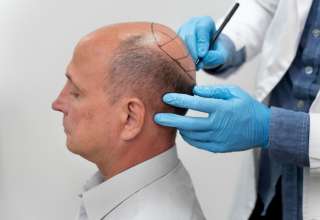So you’re interested in a lower facelift, also known as a SMAS Facelift, and wonder how a lower facelift works. Well, people are constantly seeking ways to fight the signs of aging. A lower facelift helps to reduce droopiness and excessive lines and wrinkles just below the jawline.
They can be caused by malpractice in your jaw or bad genetics. If you have an overly drooping chin, jowls, and skin, or a sagging neck, you should seriously think about getting a lower facelift.
Here, we’ve answered some more of your questions!
What Is a Lower Facelift?
A lower facelift, also called lower rhytidectomy, is a surgery that can enhance the look of sagging and loose skin on the face. This procedure helps to improve the overall appearance of the face and give it a more youthful and tight look. It has the ability to improve one’s appearance and make the skin of the lower face smoother and firmer. The procedure involves making a cut close to the hairline, tracing the natural curvature of the face.
After eliminating small areas of excess fat and tissue, the remaining skin is stretched and stitched to create a tighter appearance. Additionally, procedures such as laser resurfacing may also be conducted to enhance the texture of the skin. Recovery time for a lower facelift is typically one to two weeks, and results may be visible for up to a year.
Does a Lower Face Lift Include the Neck?
As part of the surgical procedure, some surgeons may also perform treatments on the neck. This includes tightening the neck muscles, removing excess fat, and lifting the neck skin to create a more youthful appearance. Neck work can be combined with other treatments to enhance the overall appearance and rejuvenate patients. This can involve performing procedures on the neck as part of the overall treatment process.
Whether or not a lower face lift includes the neck depends on the patient and their particular needs. Questions of this nature should always be discussed with the surgeon prior to the procedure.

What Are the Pros and Cons of a lower facelift?
Some pros of lower face lifts include minimal scarring, minimal downtime, and lasting effects. Lower facelift results tend to last longer than those from other types of facial rejuvenation procedures. The results are subtle and natural-looking, an important consideration for those who wish to look refreshed rather than “overdone.”
And there are potential risks and cons to take into consideration. Risks can include infection, nerve damage, and a variety of other complications that can occur during or after a lower facelift. Recovery from a lower facelift is much longer than it is for other facial rejuvenation procedures.
Because the skin is more sensitive in this area of the face, swelling and bruising can commonly occur. And the costs associated with a lower facelift are substantially greater than those associated with other facial rejuvenation treatments.
If you are interested in this procedure and don’t know where to get help, you can ask for assistance from the top facelift by Dr. Pruitt.
Learning Lower Face Lift Procedure the Right Way
A lower facelift is a great option for anyone looking to reduce the signs of aging in the lower face and neck regions. It is a safe and effective procedure that can provide natural and long-lasting results. For more information, we recommend sitting down with your chosen surgeon and discussing your specific needs and questions.
Contact a professional today to get started on your journey to a younger and revitalized you!
Did you enjoy this article? Keep up to date with our latest content by visiting our site regularly.










